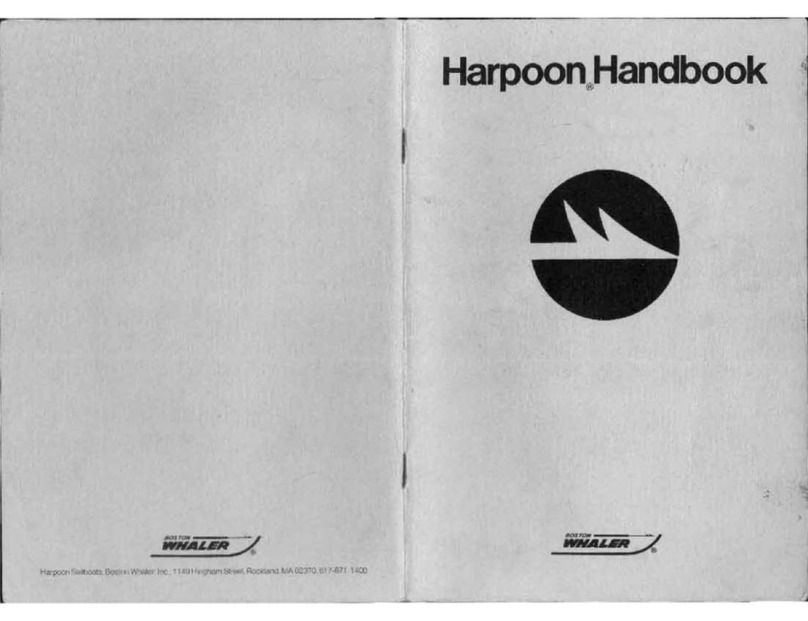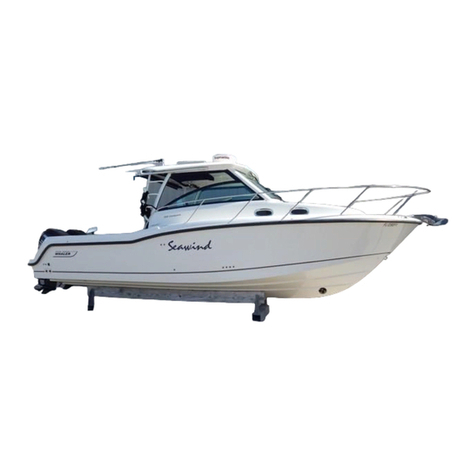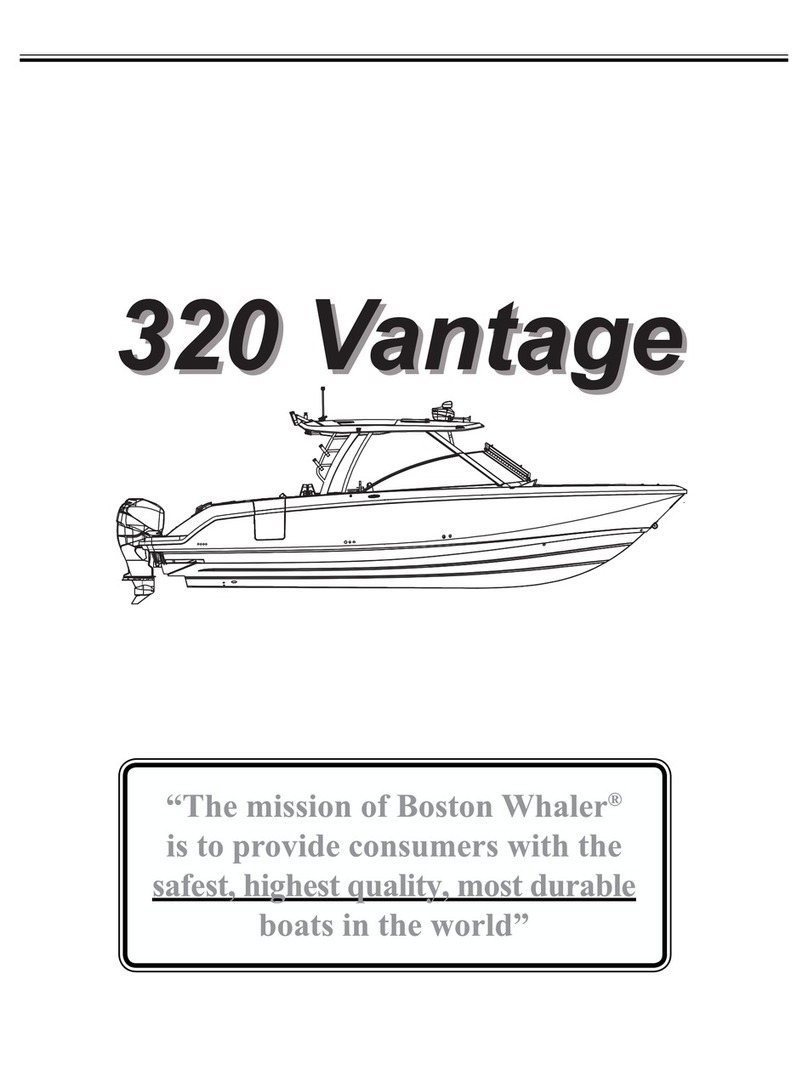
iii
270 Outrage
R
History ......................................................ii
Preface......................................................v
Introduction.............................................. vi
Owner’s manual .................................... vi
Your responsibilites................................ vi
Source of Information............................ vi
Warranties ............................................ vi
Contact Phone Numbers and
Internet Addresses ............................. vi
Boston Whaler Limited Warranty................ vii
Section 1 • Safety
Explanation of Safety Precautions ............ 1-1
Warning Labels ...................................... 1-1
Safe Boating means................................ 1-2
To Obtain These Skills ........................ 1-2
In Addition ........................................ 1-2
Safe Boating Checklist ............................ 1-2
Before departure ................................ 1-2
Trailering (if applicable) ...................... 1-2
After Return....................................... 1-2
Legally Mandated Equipment
(Minimum Required) ............................1-3
Personal Flotation devices (PFD’s).........1-3
Fire Extinquisher (Portable) ..................1-3
Whistle, Horn......................................1-3
Visual Distress Signal...........................1-3
Additional recommended Equipment for
Safe Operation ....................................1-3
Impaired Operation .................................1-3
Carbon Monoxide (CO)........................... 1-4
Lifesaving Equipment ............................. 1-5
PFD Requirement ............................... 1-5
PFD Classification ............................... 1-5
Boarding (Wear a PFD) ....................... 1-6
Maintain Control .................................... 1-6
General Considerations ....................... 1-7
Emergency Situations ............................. 1-8
Medical Emergency............................. 1-8
Water Rescue ..................................... 1-8
Returning to the victim .................... 1-8
Making contact ................................ 1-8
Getting back on board ..................... 1-8
Fire ...................................................... 1-8
To lessen the danger of fire................. 1-9
TABLE of CONTENTS
Flooding, Swamping and Capsizing ......... 1-9
Flooding ............................................ 1-9
Swamping ......................................... 1-9
Capsizing........................................... 1-9
Collision...............................................1-10
Propulsion, Control or Steering Failure....1-10
Grounding............................................1-10
Distress Signals.....................................1-10
Visual distress signals (VDS) ..............1-10
Audible distress signals......................1-11
Radio Communication ...........................1-11
Weather................................................1-11
Swimming, Diving & Water Skiing ..........1-12
Swimming ........................................1-12
Diving ..............................................1-12
Water Skiing .....................................1-13
Water Skiing Signals ..........................1-13
Emergency Engine Stop Switch ..............1-14
Float Plan .............................................1-15
Chart Your Course.................................1-15
Environmental Considerations................1-15
Fuel & Oil Spillage.............................1-15
Excessive Noise.....................................1-16
Wake/Wash...........................................1-16
Homeland Security Restrictions ..............1-16
America’s Waterway Watch.....................1-16
Warning Label Locations ........................1-16
Key To Symbols Used on Controls
& Prints ............................................1-19
Section 2 • General Information
Construction Standards........................... 2-1
Our Hull................................................ 2-1
Hull Identification Number .................. 2-1
Servicing Your Boston Whaler ................. 2-1
Manufacturer’s Certification ..................... 2-1
Certification design Category............... 2-3
Power Capacity .................................. 2-3
Specifications & Dimensions.................... 2-4
Location Of Thru-Hull Fittings ................. 2-5
Passenger Locations ............................... 2-6
General Layout ...................................... 2-7
Control Station................................... 2-8
Cockpit.............................................. 2-8
































